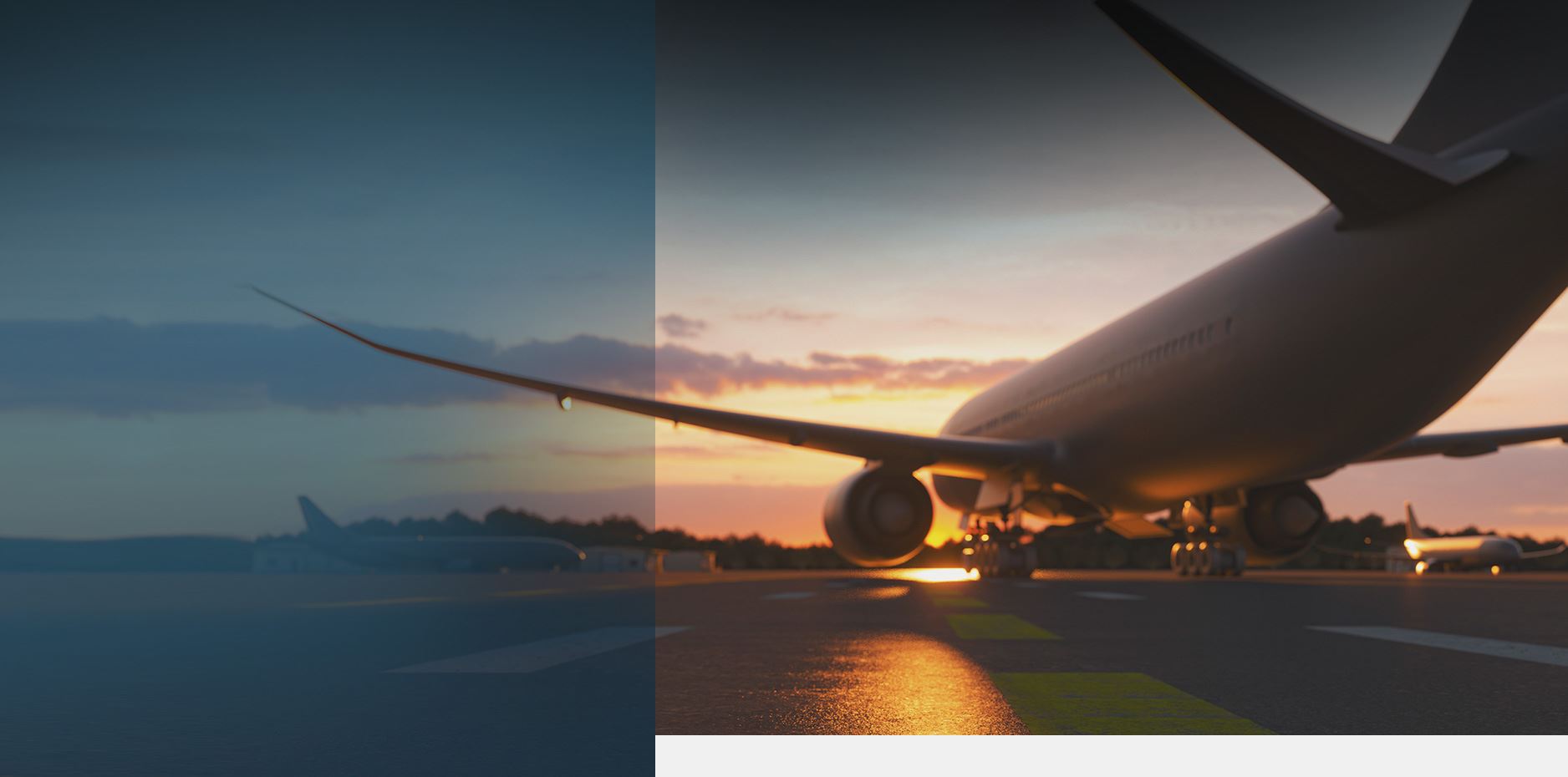
Plane Crashes into House or Building
Every airplane accident can spell tragedy, but there is an extra element when people on the ground are involved in these disasters. Those who go about their business in the seeming safety of their homes never expect a plane to crash into their living room. Planes crash into houses more often than most people realize and certainly more often than the lenient regulations in these accidents would imply. In our experience, after a plane crashes into a house or building, the emotional, physical and financial consequences are potentially as far reaching for those on the ground as those aboard the aircraft.
The legal options for the airplane passengers as well as those harmed on the ground can be difficult to navigate, and discovering all the parties responsible for these incidents can be more daunting than meets the eye. Whether the victim is the pilot, passenger or a person on the ground that is killed or injured in such an event, you will need a lawyer who is familiar with the complexities of the investigation and litigation processes that are necessary after planes crash into houses.
Call (855) 948-5098 or contact us online to speak with our legal team.
How Often Do Planes Crash Into Houses?
As with all air travel, accidents are not common, but they do happen to hundreds of planes each year. However, there are certain factors that tend to play a part in a large majority of cases where planes crash into houses.
Most planes crash into houses near airports. In the event a pilot cannot make it to the nearest airport, most pilots will try to land their plane in an empty stretch of land, such as a large grassy field or a clear roadway. Whenever a plane is experiencing difficulties midair, an air traffic controller (if one is available) will usually try to direct the struggling aircraft to the nearest airstrip. This exposes the houses surrounding airports to the possibility that a plane with mechanical difficulties can fall short of the desired landing area and accidentally crash into a house.
It is important to note that houses around large, international airports are mostly unaffected by these instances. This is because most of the time when a plane crashes into a house, a small plane, or general aviation aircraft, is involved. In fact, while the number of large commercial airline crashes has decreased, the number of small or general aviation plane crashes has remained largely unchanged over the years.
It is becoming harder for private planes to take off and land at large airports that are servicing commercial airlines, so these planes are generally directed to small airports, often in the middle of residential areas. Not all airports have control towers. Not all airports with control towers are manned by air traffic controllers around the clock. Smaller airports are not always certified to handle planes carrying 30 or more passengers. This lack of certification also means that these airports are not required to have a tower with staff to visually monitor, and separate, planes taking off or landing, even when the pilots are required to fly by visual flight rules.
Smaller personal planes and helicopters are not required to carry insurance, and neither are the maintenance facilities that service these small planes. Private pilots are allowed to have fewer hours of in flight training under their belt and the airplanes and helicopters they fly are often left without many of the safety protocols and technology that are standard for large passenger planes.
Take for example the homes surrounding the Santa Monica Municipal Airport. This small airport has had 42 planes crash land within five miles of the airport since the 1980s. Many people in the community have been petitioning to close the airport for decades out of fear of further accidents damaging their homes. And, Santa Monica Airport does have a control tower, but it is not staffed around the clock.
Who is to Blame When Planes Crash Into Houses?
A plane usually crashes due to a number of factors. Our law firm has decades of experience in ferreting out the true causes of these tragedies whether it be related to aircraft maintenance, faulty plane design or aircraft malfunction, pilot error or even air traffic controller negligence.
It is often hard to determine the party or parties at fault when planes crash because so many of these issues can mask one another. Even NTSB reports sometimes incorrectly determine the cause of an air crash. A USA Today investigation found that many planes crashes which the NTSB originally claimed were caused by pilot error, were determined in court to have been caused by defective parts or poor design. This is why it is so important to have a proper investigation done by an experienced aviation attorney. It is often the case that the NTSB report is just the starting place for a thorough investigation when it comes to small airplane or helicopter crashes.
In one of our most recent cases, a Beechcraft Bonanza crashed into a home in Palm Coast, Florida, killing all three people on board. The potential causes of the crash were not apparent until our firm took a closer look at the incident. In this case, when the pilot reported a vibration in his engine to air traffic control, the FAA air-traffic controller directed him to an airport, which they said was only five miles away.
Our lawsuit, on behalf of the family of one of the deceased passengers, argues that the airport the controller suggested was not the closest airport since there was another airport available that was two miles closer. We also contend that there were additional errors made by the controllers who directed the pilot to fly farther away from the airport and perform numerous turns, which caused the aircraft to lose precious altitude while having insufficient engine power. Tragically, these events culminated in the airplane crashing into a home less than a mile from the airport.
Hidden Issues After Planes Crash into Houses
Unlike larger airplanes, pilots of small planes that hold only a few passengers are often not as thoroughly trained. They are not required to train as long as pilots who fly for airlines before they are certified and they have little to no oversight when it comes to plane maintenance or maintaining their skills.
Additionally, flying a plane is not treated like driving a car in the eyes of federal regulators. This means that for small planes that are privately operated, the pilot is not required to have insurance. When one of these pilots makes an error that sends an aircraft into a nearby residence, the homeowners can find themselves in a terrible situation.
With no, or minimum, insurance on the plane to cover the destruction of the home, the homeowner might be left to cover the loss. Many homeowners’ insurance does not necessarily cover a loss caused by a plane crash. Often times there are no clearly identifiable responsible parties to shoulder the financial burden of the destruction of property, not to mention any death or injury to persons in or near the home, resulting from such an event.
It is for these reasons, at least, that experienced aviation attorneys should be consulted in an effort to determine if there actually is a responsible party who should be held accountable for the losses.
If you need legal representation from attorneys experienced in handling aviation accident cases, contact the Wisner Baum law firm today by phone at (855) 948-5098 or by filling out our contact form.
Our Case Results

-
$265 Million Settlement Fatal Train Crash
In 2016, Wisner Baum attorney Timothy A. Loranger and six other attorneys in the Plaintiffs’ Management Committee were able to secure a $265 million settlement for victims of the 2015 Amtrak 188 derailment in Philadelphia, one of the largest in the U.S. for 2016.
-
$14 Million Settlement A Major US Plane Crash
Wisner Baum obtained a $14 million settlement for the death of a passenger in a major US plane crash.
-
$12 Million Settlement Helicopter Crash
Wisner Baum secured a $12 million settlement for a passenger who was injured in a helicopter crash.
-
$10 Million Settlement A Major Foreign Plane Crash
Wisner Baum obtained a $10 million settlement for the death of a passenger in a major foreign plane crash.
-
$2.0 Billion Verdict Personal Injury
In May of 2019, the jury in the case of Pilliod et al. v, Monsanto Company ordered the agrochemical giant to pay $2.055 billion in damages to the plaintiffs, Alva and Alberta Pilliod, a Bay Area couple in their 70s.
-
$80 Million Verdict Personal Injury
Wisner Baum attorneys served on the trial team in the case of Hardeman v. Monsanto Company, which resulted in an $80 million jury verdict for the plaintiff, Edwin Hardeman.

Client-Focused Representation
REVIEWS & TESTIMONIALS
We believe our track record speaks for itself. But you don’t have to take our word for it. See what our clients have to say about working with us.
-
"I Can’t Imagine a Better Law Firm"
Multiple lawyers recommended Wisner Baum to me and I have been consistently impressed with the quality of their work.
- Best Law Firms Survey -
"They Are About Changing the Systems..."
Wisner Baum are not only amazing attorneys but more importantly, they are activists. They are about changing the systems which got us into trouble in the first place. They understand their role in the process of making change.
- Kim Witczak -
"Top Legal Minds in the Country"
The Wisner Baum firm has some of the top legal minds in the country; they are driven, determined, trustworthy, ethical and passionate.
- From Best Lawyers® Best Law Firms





